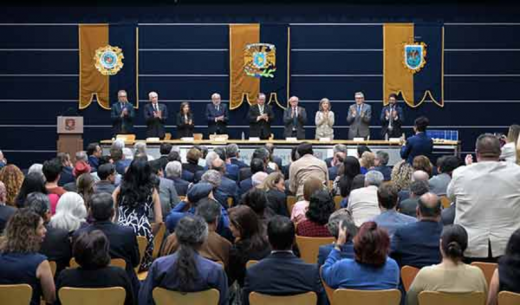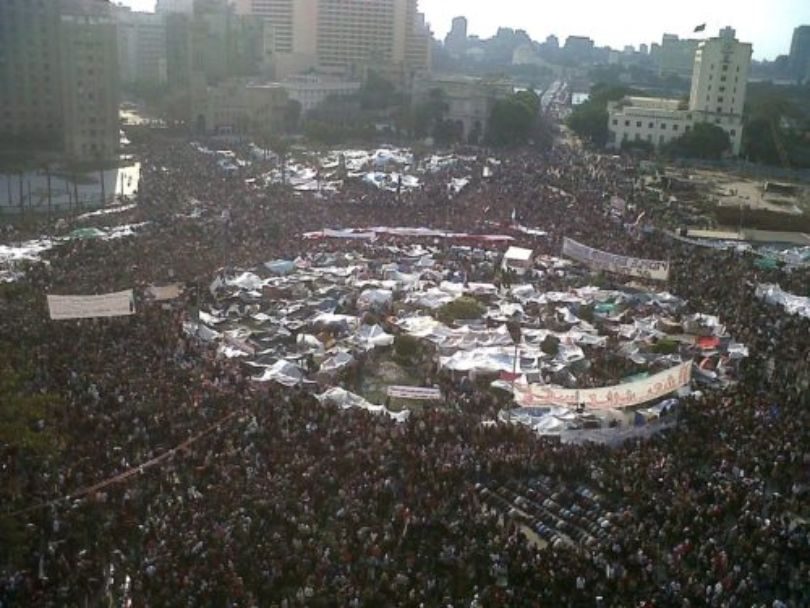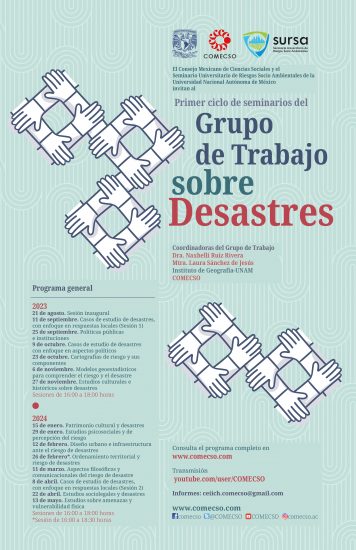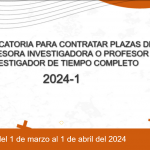From the 1979 Revolution to the Arab Spring
The Making and Unmaking of the Moments: From the 1979 Revolution to the Arab Spring
VON FORUM TRANSREGIONALE STUDIEN · VERÖFFENTLICHT 8. MAI 2018 · AKTUALISIERT 8. MAI 2018
By Behrooz Moazami
The 1979 revolution in Iran is often identified as a pivotal moment in the Islamization of political and social movements in the Middle East, representing the forceful return of politicized religion. Yet this moment, because of how it was conceived and its inherent sectarian nature, bred oppression and resistance; it sowed the seeds of its own destruction. I argue that, despite their failures, the Arab Spring and the opposition to Islamic rule in Iran since 1979 represent the kernels of the unraveling of this Islamic moment. Religious discourse in its illiberal form is in retreat in the region. Historical moments are made and unmade through long and complex national, regional, and global processes. Every moment holds the ingredient of its own transformation if not destruction. Studies of moments are studies of change.
From the start I concede that my assertion that “Religious discourse in its illiberal form is in retreat” in the Middle East might seem a little bit far-fetched, more speculative desire than a statement that facts on the ground can support. However, I hope to show that my understanding of the present and my expectation of the future is indeed grounded in some concrete basis. Even if I do not succeed in this endeavor, I defend my approach and argue that imagination and desire are historical forces. I imagine, therefore I am. As I will further elaborate at the end of this short paper, I read the present and past from the perspective of the future. Hopefully, many others share my desires and hopes for the future of the Middle East.
Iranian students at the US embassy in Tehran, 4.11.1979. Public Domain via Wikimedia Commons.
The Islamization of the 1979 Moment
The Iranian revolution of 1979 transformed the 1979 moment into an Islamic moment through political processes. This transformation occurred first through the gradual Islamization of social movements starting in early 1978 and leading to the 1979 revolution. The transformation continued through the Islamization of the revolution from 1979 to 1981, which took the form of political intrigue and bloody repression as the new Islamic leadership aimed to fully consolidate its power backed by mass mobilizations. These developments, in the wake of a mass revolution that brought together a large sector of left and liberal forces and included democratic demands, gave birth to a regime with a dual nature, both republican and theocratic. The history of the last nearly forty years in Iran is the unfolding story of the dual nature of this moment.
The Islamization processes happened at the expense of the republican facet of the regime and a large sector of left and liberal forces—the main political forces of the movement and revolution. Khomeini, a maverick, radical political leader, used his religious position and his gained political power to form momentary alliances with a good part of the contending forces and international power holders to gain and consolidate power. Khomeini then gradually used state power and political intrigue to pacify and annihilate his once allied forces, his rivals.
The Islamic moment consolidated and redefined itself after what could be called a series of mini civil wars against the regional opposition movements of the Azeris, Kurds, Arabs, and Turkomans as well as various democratic dissident forces. This resulted in massive repression in June 1981 and the forceful removal of the first elected president.
Politically, perhaps nothing better contextualizes the transformation of Iran from a quasi-liberal Islamic republic to an openly theocratic regime than the changes in the first draft of the Iranian Constitution, approved by Khomeini himself in Paris and later in Iran with the empowerment of the regime. Indeed, the imposition of velayat-e faqih (the Guardianship of the [Islamic] Jurist) in December 1979 is the direct outcome of this empowerment. This Islamization of the revolution and the state was facilitated through two international crises: the hostage taking at the American embassy in Tehran in November 1979 during which 52 Americans were held captive, many for 444 days, and the beginning of the Iran-Iraq War in September 1980.
The Islamic moment led to the creation of new and modern social actors who took religion as the basis of their claims and actions and as the means to their ultimate goal. By seizing state power, these actors transformed themselves, their religion, and the state. The Islamic moment gave birth to the formation of what I call Homo islamicus, or those who saw that their ultimate goal of Islamic rule was not just a vision, but was actually feasible. Further, the new regime further defined the ideal “Islamic man” as its most pernicious and potentially totalitarian face. Yet, now, almost forty years after these two pivotal moments in Iranian history, the Islamic regime in Iran is not yet stable. The Homo islamicus is in deep existential crisis. Its life cycle is ending.
Now, I will turn briefly to describe what had been called, perhaps hastily as it brought with it much expectation, the Arab Spring. I will relate its unfolding in relation to the Islamic moment before presenting my broader discussion on historical moments.
The Moment of the Arab Spring
Protesters on the Tahrir Square, Cairo, 8.2.2011. Image: Mona, CC BY-SA 2.0 via Wikimedia Commons.
In 2011, millions of people around the Arab Middle East were mobilized to oppose longstanding Arab authoritarian regimes. Though Middle Eastern history is not devoid of popular uprisings, this moment was distinctive, if not unique. The Arab Spring, occurring in different countries with diverse historical backgrounds and governmental structures, started as youth-led, spontaneous uprisings. The movements’ leaders were educated and tech savvy, but they were not from the ranks of traditional political and social elites. They were products of the postcolonial and post–Cold War period. Unlike the militants of earlier periods, these youthful protestors were immune to all sorts of ideologies, including still growing Islamic movements.
The massive and widespread Arab Spring heralded a new beginning in the region’s political life, despite its later catastrophic outcome. The events were festive, and a majority of the participants were not committed to traditional ideological and political movements. Even the well-organized and relatively moderate Muslim Brotherhood was not involved in organizing or leading the movement. In Egypt, where the Brotherhood was the most organized, it was by all accounts a latecomer to the protests. The Arab Spring movements were larger and more powerful than earlier waves or protest. The concerns of the Arab Spring’s participants were not expressed in religious terms, or in terms familiar to the region’s long social justice tradition. They demanded a fairer share of national resources and opposed state corruption and official cronyism. The participants were mainly demanding respect, dignity, and better and more humane treatment by governing elites. One could argue that the Arab Spring started as a mass spontaneous civil rights movement for a better life and popular sovereignty, without any references to long-held views on nationalism, socialism, anti-imperialism, and Islamism. It started as a unique mass movement for change.
With the slogan “al-shaʿb yurid isqat al-nizam!” (“The people want the fall of the regime!”), the Arab Spring soon transformed from a movement of self-empowerment to one of largely nonviolent resistance and revolution. Let me emphasize two nonviolent revolutions. The success in Tunisia led to the revolution in Egypt on February 11, the same day the Iranian revolution had occurred in 1979. Toppling the Egyptian regime through mass demonstrations and a popular presence in public spaces without an armed insurrection or coup were new developments not only in the Arab world, but perhaps globally. The Arab Spring gave birth to the Arab public.
Yemen and Libya followed the trajectory laid out in Tunisia and Egypt. However, these regime changes could hardly be classified as revolutions because of direct intervention by the United States and Saudi Arabia in Yemen, and by NATO and Arab Gulf countries in Libya. These interventions changed the course of the Arab Spring. In Syria, millions poured into the streets despite their religious and ethnic differences, or their degree of religiosity, before being dragged into a zone of regional and international intrigue. Other Arab countries witnessed political and social unrest, though the demonstrations were smaller and had less intensity. Some of these countries, such as Saudi Arabia and Kuwait, had no history of mass movements.
The Arab Spring marked an end of a political era, the end of charismatic leadership and hierarchical and ideological mobilization. It provided an opportunity for the formation of new social networks, new types of horizontal organizational links, and collective leadership. It generated a new generation of confident activists. The Arab Spring gave birth to the Arab postcolonial subject that I call Homo arabicus, who demands a focus on Arabness, popular sovereignty, and human rights, not on religion and empowerment of nation-states. One of course should not deny particularly in Tunisia and Egypt the role of union organizers and their members as well as the women’s movement.
The Transformation of the Arab Spring and the Islamic Moment
Despite its popularity and fast spread, the Arab Spring did not keep its initial momentum long enough to produce meaningful democratic institutional changes, except perhaps directly in Tunisia, in large part due to the secular labor movement, indirectly in Morocco, and to some extent in Kuwait. The Arab Spring soon turned to the Arab Winter. War, destruction, and the return of the deep state as well as the formation of new political entities and regional and international intrigues have been, unfortunately, the most tangible outcome. One can argue that it is still too soon to provide a balance sheet, that we should wait to see how events unfold, but perhaps we can make two claims by relating the Arab Spring to the Islamic moment.
First, the transformation of the Arab Spring to the Arab Winter has coincided with the end of the Middle East as we have known it since the formation of the mandate regimes during the first quarter of the 20th century. The changes are in both institutional terms and in the political and cultural landscape, so it is possible to see the momentum created by the Arab Spring as contributing to the evolution of the new Middle East as it continues the process of reconfiguration. How the Middle East might look in the coming years is a matter of speculation, but certainly the post-mandate state structures and territorial boundaries are not going to continue: the nation-states are in crisis. Culturally, we are in the process of redefining what Arabness could mean, and particularly important is the role religion can play in the Arab identity in an extremely volatile region. This process is different from the Pan-Arab projects of the past, e.g. Nasserism and Baʿthism, because rather on being a state’s building project is based on popular sovereignty.
Islam was a part of Arab nationalism and Arab socialism. As these two master narratives of Arab identity faded, Islamism became a force in the post 1967 defeat. Yet jihadists, particularly ISIS, have in fact accentuated the divergence of Islamism and Arabism by forming a puritanical, nonterritorial version of Sunni Islam alien to ordinary Muslims whose communal life has historically been based on belonging to a particular territory. The Homo islamicus in its jihadist version is in retreat while other regional identities, including Arabness, are in the process of redefining themselves. This process could well revive the idea of Arabness based on the cultural and political sovereignty of Arabs, as was envisioned by the Arab Spring.
Second, Iran, the springboard of this wave of Islamism, is experiencing a radical transformation of its own identity, a challenge that now has a regional echo. Iran’s most important role in the region involves religious sectarianism, emphasizing Shi’a identity by providing cultural, political, financial, and military support for its dependents. This support, however, makes the regime’s Shi’a identity more exposed to popular criticism in Iran at a time when it is becoming ever more difficult for the regime to continue its repression at the same level as it has been doing for nearly four decades. The Homo islamicus in its Shi’a version is in deep trouble.
In short, religious discourse in its illiberal form is in retreat in the region, and this should be welcomed. Let me end my discussion by rearticulating the issues discussed above in the abstract language of theory.
Moments in History
Moments are fractions of time and, like time, are subjective. While time is infinite and intangible, a moment is concrete and visible. Moment is basically a phenomenology of temporality. Using Wittgenstein’s famous distinction between memory-time (which for the sake of argument here I simplify to perception of an event at the time, immediately after it, or with distance) and information-time (which I use as a matrix of reference—the passage of chronological time), I emphasize the subjectivity of time in both senses. Past, I argue, is always imaginary; reconstruction of memory-time through information-time is always imagining a future. The present is indeed where the imagination of past and future coincides. I imagine, therefore I am.
- Moments are socially and historically constructed through long and complex national, regional, and global processes.
- The formation of a moment is conceived by force at the expense of other moments.
- Moments in history are multidimensional, compact, complex, and contested.
- Moments in history are the sources and outcomes of other moments; they create historical and social momentum.
- Moments are transitional and have seeds of their own untangling, if not outright destruction, hence contention and transformation in history.
- Moments are relational and do not stand alone. They could only be part of matrixes such as other moments that precede or follow.
- Moments in relational terms are accumulative; they represent and reconfigure a number of other preceding moments and shape ensuing ones, and in doing so they transform themselves.
- Moments have social force, reflecting and embodying individual or collective speculations and expectations.
- Moments are action oriented. Creation of and or perception of moments through subjective senses shape and influence actions.
- Moments can be strategic. The conjunctions of human experiences, expectations, and actions make certain moments more consequential than others; they shape the trajectory of consecutive events.
- Moments have a life of their own, but they change as well. Moments create other moments and their subjectivity leads to objectivity. Hence, discourses and actions show similarity and periodicity, and history transforms through waves, or what we commonly refer to as an age. Studies of moments are studies of change and its complexity.
I hope I am correct or partially correct here, but I will end by hoping for something far more important: I hope that the future historians could refer to our unfolding age as the age of democracy and peace in the Middle East.
Behrooz Moazami, Associate Professor, is the Patrick G. O’Keefe Distinguished Professor of History and the founder and director of the Middle East Peace Studies program at Loyola University New Orleans. Moazami holds two doctorates. His first dissertation, “Les Etats nations européens et l’avenir de la communaute européenne en tant que communauté politique,” in Political Science (University of Paris VIII, 1998) was acknowledged as Très Honorable and earned him the EU Post-Doctoral Fellowship at the Center for European Studies, New York University (2001–2002). He received the Albert Salomon Memorial Award in Sociology (New School for Social Research, New York, 2004) for his second dissertation, “The Making of the State, Religion, and the Islamic Revolution in Iran (1796–1979),” in Sociology and Historical Studies.
Citation: Behrooz Moazami, The Making and Unmaking of the Moments: From the 1979 Revolution to the Arab Spring, in: TRAFO – Blog for Transregional Research, 08.05.2018 https://trafo.hypotheses.org/9833.
Further articles in the series “The ‘1979 Moment’ in the Middle East” on TRAFO:
Amir Moosavi (2018), Looking Back at the “1979 Moment” in the Middle East
[Artículo tomado de TRAFO Blog for Transregional Reseacrh]
Te puede interesar

Presenta la UNAM colección sobre la obra jurídica de Jorge Carpizo
Laura Gutiérrez - Abr 25, 2024[Texto tomado del Boletín UNAM-DGCS-306] Son 10 tomos con los que se busca preservar su valiosa herencia cultural y servir…

El Dr. Ricardo López Santillán fue designado Secretario Ejecutivo del COMECSO
comecso - Abr 24, 2024Comunicado La Asamblea General Extraordinaria del Consejo Mexicano de Ciencias Sociales, celebrada el 11 de abril pasado en el Auditorio…

Nuevos miembros afiliados al COMECSO
comecso - Abr 24, 2024Comunicado La Asamblea General Extraordinaria del Consejo Mexicano de Ciencias Sociales, celebrada el 11 de abril pasado en el Auditorio…










